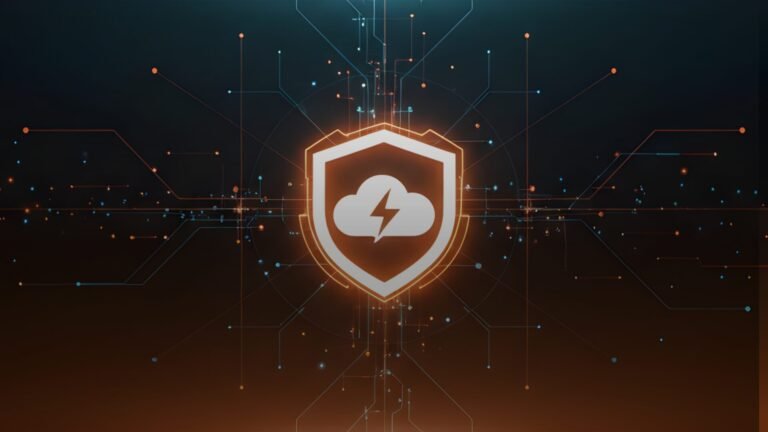On November 18, 2025, a sudden technical issue at Cloudflare brought large sections of the internet to a halt. Starting around 6:20 a.m. ET, users across the globe faced loading errors on popular sites and apps. This wasn’t just a minor glitch—it affected everyday tools people rely on for work, entertainment, and communication. Social media feeds froze, AI chatbots went silent, and even outage-tracking sites struggled to stay up. For many, it was a stark reminder of how connected our digital world really is, and how one company’s hiccup can cascade into widespread problems.
The outage lasted for hours in some cases, with services flickering back online in waves. Reports poured in from users in the US, UK, Europe, and Asia, highlighting the global reach of the disruption. By midday, Cloudflare had acknowledged the problem and started rolling out fixes, but the damage was already done. Businesses lost potential sales, remote workers couldn’t access key tools, and casual users simply couldn’t scroll through their feeds. This event underscores the vulnerabilities in our online infrastructure, especially as more services shift to the cloud.
In this post, we’ll break down exactly what happened during the Cloudflare outage, which platforms felt the biggest hit, and why a service like Cloudflare holds so much sway over the web. We’ll also look at the likely causes, draw from past incidents, and share practical steps to help you and your team prepare for the next one. Whether you’re a site owner, a business leader, or just someone frustrated by downtime, this guide aims to give you clear insights and actionable advice to navigate these disruptions better.
Timeline of the November 18 Cloudflare Outage
The trouble kicked off quietly but built fast. Around 11:20 UTC (that’s about 6:20 a.m. ET or 11:20 a.m. in London), Cloudflare detected a sharp rise in unusual traffic hitting one of its core services. Within minutes, this snowballed into an “internal service degradation,” as the company later described it. Users trying to access sites protected by Cloudflare saw error messages pop up, like “Error 520” or “internal server error,” blocking pages from loading.
By 7 a.m. ET, the spike was visible on Downdetector, the go-to site for outage reports. Ironically, Downdetector itself relies on Cloudflare, so it briefly went dark too, delaying real-time tracking. Reports climbed into the thousands, with peaks over 10,000 for Cloudflare alone. Affected users refreshed pages in vain, only to hit the same walls. Some services recovered partially after 30 minutes, but full stability took longer—up to two hours for many.
Cloudflare’s status page lit up with updates. At first, they noted they were “aware of and investigating an issue which potentially impacts multiple customers.” Fifteen minutes later, they confirmed the global network was under strain but gave no firm timeline for resolution. By 8:30 a.m. ET, engineers had deployed a fix, and services began stabilizing. However, lingering errors persisted for some users into the afternoon, as the team monitored for full recovery.
This wasn’t the first time such a chain reaction occurred, but the speed and scale stood out. Traffic from diverse sources overwhelmed the system, likely triggered by a combination of routine user activity and an unexpected surge. For context, similar patterns have shown up in previous incidents, where a small anomaly in routing or load balancing tips the whole network off balance. The outage ended without a full post-mortem from Cloudflare yet, but early signs point to no malicious intent—just a tough spot in managing massive scale.
Key Platforms Disrupted by the Outage
No single site was immune, but the heavy hitters took the brunt. X, the platform once called Twitter, saw thousands of users locked out of timelines, direct messages, and searches. Posts on other networks flooded with screenshots of error screens, turning the outage into a viral topic—once people could access alternatives.
ChatGPT and other OpenAI tools ground to a halt for many. Writers, coders, and students mid-query faced blank responses or failed logins, disrupting workflows that depend on quick AI assistance. Downdetector logged a surge in OpenAI complaints around the same time, confirming the link to Cloudflare’s backend.
Streaming giant Spotify couldn’t deliver tunes for affected listeners. Playlists stalled, and app launches failed, frustrating commuters and gym-goers alike. Design platform Canva, popular for quick graphics, showed similar issues, with users unable to edit or share projects. Film buffs on Letterboxd couldn’t log ratings or browse reviews, a niche but telling example of how even hobby sites suffer.
Other casualties included Perplexity AI for search queries, Google’s Gemini for chats, and gaming services like League of Legends, where matchmaking and logins broke. Betting site bet365 and crypto exchange Coinbase reported access problems, potentially costing users real money. Even everyday apps like Uber saw glitches in ride requests, though not universally. The outage’s footprint was broad, hitting everything from social feeds to financial tools, and it spared no region.
These disruptions weren’t isolated; they stemmed from shared reliance on Cloudflare’s network. For businesses, even short downtime adds up—lost ad revenue on X, stalled collaborations on Canva, or interrupted customer support via ChatGPT. Users adapted by switching to mobile data or backups, but the frustration was universal.
The Backbone Role of Cloudflare in Today’s Internet
To grasp why this outage rippled so far, it’s worth understanding Cloudflare’s place in the digital ecosystem. At its core, Cloudflare acts as a content delivery network (CDN). Imagine the internet as a busy highway system: when you visit a site, your request travels far, often bouncing between servers worldwide. A CDN like Cloudflare sets up outposts—data centers in over 300 cities—to store copies of popular content closer to you. This cuts load times from seconds to milliseconds, making sites feel snappier.
But Cloudflare does more than speed things up. It layers on security features that shield websites from threats. For instance, it blocks distributed denial-of-service (DDoS) attacks, where bad actors flood a site with fake traffic to crash it. By filtering suspicious requests at the edge, Cloudflare lets legitimate users through without taxing the origin server. This is crucial for big platforms; X handles billions of requests daily, and without such protection, it’d buckle under spam or hacks.
Analytics and optimization tools round out the package. Cloudflare helps sites handle traffic spikes—think Black Friday sales or viral news events—by scaling resources on the fly. It also enforces rules like rate limiting to prevent abuse and provides free SSL certificates for secure connections. Small bloggers to Fortune 500 companies use it because it’s affordable and effective.
Why does this matter so much? Over 20% of all web traffic routes through Cloudflare’s network. That’s trillions of requests monthly, powering everything from e-commerce to streaming. When it falters, the web doesn’t just slow—it fragments. Sites without backups go dark, and users blame the end service, not the invisible middleman. This dependency grows as more apps go serverless or edge-computed, leaning on providers like Cloudflare for reliability.
In simple terms, Cloudflare is the unsung hero keeping the internet fast and safe. But heroes can stumble, and when they do, we all feel it. This outage highlighted that no system is foolproof, pushing users and developers to think harder about redundancy.
Digging into the Cause and Cloudflare’s Quick Response
Pinpointing the exact trigger for November 18’s mess points to that “unusual traffic spike.” Cloudflare’s team spotted it early, around the 11:20 UTC mark, but the volume overwhelmed internal processes. This led to a degradation where services like DNS resolution and load balancing stuttered, causing the error cascade. No evidence suggests a cyberattack; it looks like a capacity crunch from legitimate but uneven demand.
Cloudflare moved fast. Within an hour of detection, they isolated the affected service and rerouted traffic. Engineers pushed configuration changes to stabilize the global network, prioritizing high-impact customers. By 8 a.m. ET, most core functions were back, though some edges lagged due to propagation delays across their vast setup.
Their communication stayed steady via the status page and social channels, updating every 15-30 minutes. This transparency helped users gauge when to retry, reducing panic. Compared to past responses, it was solid—lessons from earlier outages clearly informed the playbook.
Glimpses from Cloudflare’s Outage History
Cloudflare isn’t new to these challenges. Back in June 2019, a routing mix-up with Verizon jammed traffic, taking down sites for hours. In 2022, a faulty update crippled their self-hosted software, affecting thousands. More recently, a March 2025 glitch in object storage like R2 caused error spikes for developers. And in July 2025, a topology tweak knocked out DNS resolver 1.1.1.1 for over an hour.
Each incident revealed weak spots: software bugs, partner dependencies, or scaling limits. Post-mortems on their blog detail fixes, like better testing and failover designs. These events, while rare (uptime hovers at 99.99%), show the trade-offs of centralization. They also drive improvements, making the network tougher over time.
Practical Ways to Shield Your Operations from Outages
Outages like this one expose risks, but you can build defenses. Start with diversification: don’t put all eggs in one cloud basket. Use multiple CDNs—pair Cloudflare with Akamai or AWS CloudFront—for automatic failover. Tools like anycast DNS can reroute traffic if one provider dips.
Next, set up strong monitoring. Services such as Datadog or New Relic ping your sites constantly, alerting you to slowdowns before users notice. Pair this with synthetic tests that simulate user paths, catching issues early.
Test your resilience regularly. Run chaos engineering drills—tools like Gremlin inject failures to see how your setup holds. This uncovers hidden dependencies, like over-reliance on a single API.
For businesses, craft a solid incident response plan. Assign roles: who communicates with users? Who troubleshoots? Keep offline backups for critical data and quick-switch options for apps. Invest in edge computing to process data locally, reducing central points of failure.
Finally, educate your team. Simple habits, like checking status pages daily, can spot brewing storms. By layering these steps, you turn potential chaos into manageable blips, keeping operations steady even when giants like Cloudflare stumble.
Ready to Strengthen Your Digital Setup?
If today’s outage has you rethinking your online reliability, Flutebyte Technologies can help. We specialize in custom cloud strategies that prioritize uptime and security, from multi-provider integrations to proactive monitoring. Contact us today at flutebyte.com/contact for a free audit of your infrastructure. Let’s make sure your business stays online, no matter what.
Frequently Asked Questions
1. What caused the Cloudflare outage on November 18, 2025?
A sudden spike in unusual traffic overwhelmed internal services, leading to degradation. No cyberattack was involved.
2. How long did the outage last?
It started around 6:20 a.m. ET and most services recovered within 2-3 hours, though some issues lingered longer.
3. Which sites were most affected?
X, ChatGPT, Spotify, Canva, Letterboxd, and Downdetector saw major disruptions, among others.
4. How can I check if a site is down due to Cloudflare?
Look for error codes like 520 or 521, or monitor Cloudflare’s status page at cloudflarestatus.com.
5. What should businesses do to avoid outage impacts?
Diversify providers, monitor actively, and test failover plans to maintain continuity.




